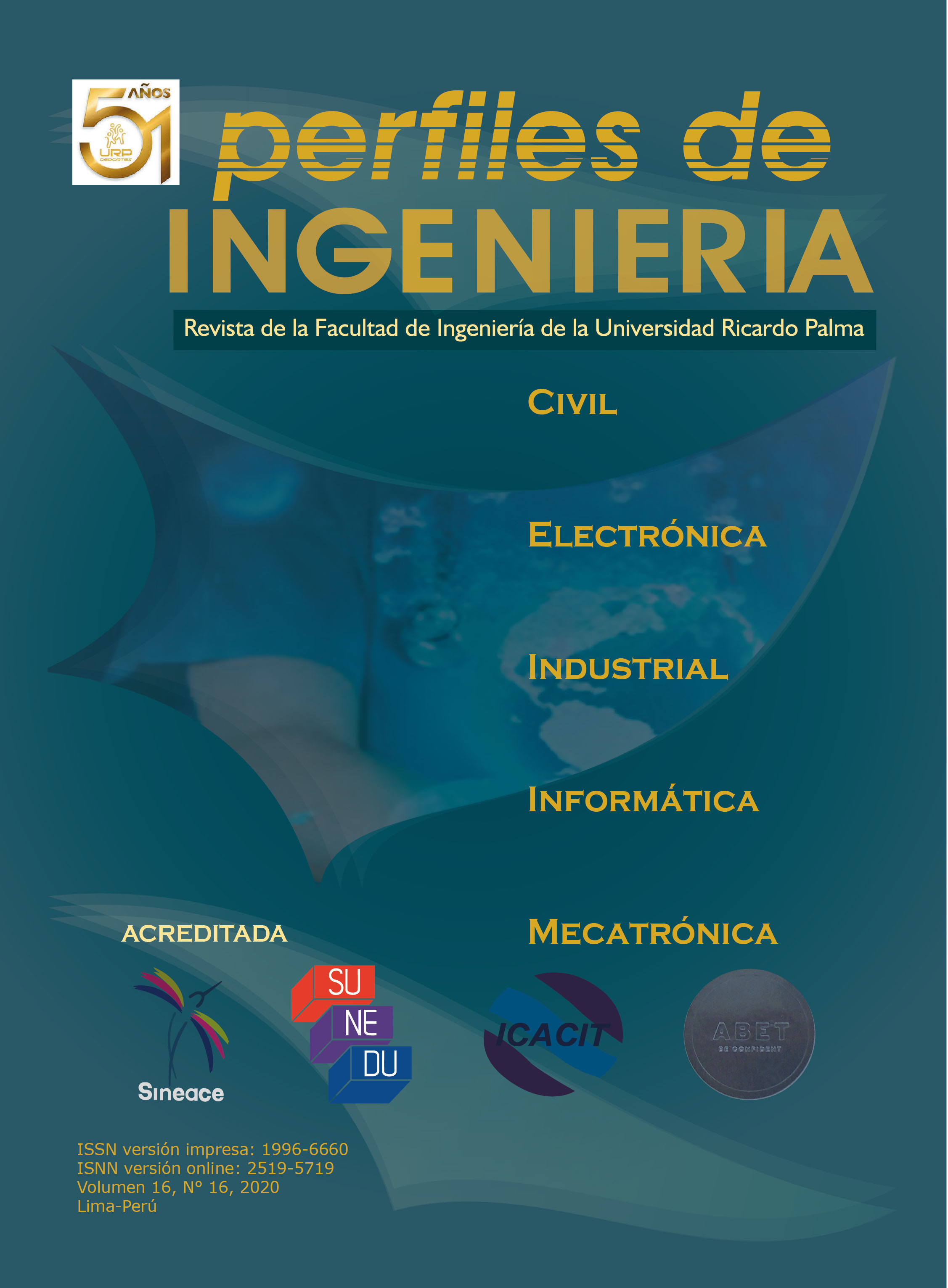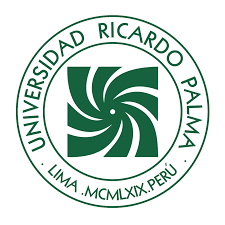Modeling adaptive interfaces from learning web User profiles using probabilistic grammars
DOI:
https://doi.org/10.31381/perfiles_ingenieria.v20i15.3544Keywords:
Interface, Adaptive interfaces, modeling adaptive interfaces, user profiles, probabilistic grammar, navigation patternsAbstract
In a computer system involving the machine and the user, they are expected to fully respond to what is expected, or at least sufficiently so that the operation of the system can be considered reasonably acceptable. Unfortunately this doesn’t always happen. The problem of an inadequate user interface design for computer applications is evidenced that users do not respond to what was objectively expected of them, causing unwarranted rejections, poor use of systems, and, in particular, some cases up to mistakes and accidents. The objective of this research is to capture the activities of users during their connection and extract patterns of behavior that allow to define their profile with the aim of designing adaptive interfaces. Context-free probabilistic grammars are used to model users’ browsing sessions. Web sessions are represented by graphs and grammars free of probabilistic context in such a way that the sessions that are most likely are considered the most visited or preferred, therefore the most relevant in relation to a topic Determined. It is intended to develop a tool for processing web sessions obtained from server log represented by context-free probabilistic grammars.
Downloads
References
A. Aho (2016). Compiladores, principios, técnicas y herramientas. Edit. DF Addison-Wesley, Wilmington-Delaware EUA. México.
J. Brookshear (1993). Teoría de la computación. Addisson Wesley Iberoamericana Wilmington Delaware. México DF.
J. Brookshear (2014). Computer Science: An Overview. México DF Pearson.
A. Cortez (2014). Lenguajes y traductores. Edit. UCSS. Lima, Perú.
J. Hernández (2008). Introducción a la minería de datos. Madrid. España. Pearson Prentice Hall España.
J. Hopcroft (1993). Ullman “Introducción a la teoría de autómatas”. Edit. CECSA. México DF.
J. Palma (2008). Inteligencia artificial. Edit. MacGraw Hill. México.
S. Russell (2013). Inteligencia artificial. Un enfoque moderno. Edit Pearson. México DF.
L. Joyanes (2013). Big Data. Análisis de grandes volúmenes de datos en organizaciones. México DF.
Artículos
A. Cortez (2009). “Procesamiento del lenguaje natural”. Revista RISI vol 6. Nº 2, pp. 45-54, 2009. http://sisbib.unmsm.edu.pe/BibVirtual/Publicaciones/risi/2009_n2/v6n2/a06v6n2.pdf
A. Cortez A. (2013). Gramáticas probabilistas, Revista Algorithmic 4(1), Pg 9-16 ISSN 22203982 Lima Perú
F. Iriarte, F. (2005). Patrones de navegación hipertextual en usuarios inexpertos de sexto grado Fernando Iriarte Díaz Granados. Revista del Instituto de Estudios Superiores en Educación
Universidad del Norte 6(6) ISSN 1657-2416. Recuperado:file:///C:/Users/Cortez/AppData/
Local/Temp/Dialnet-PatronesDeNavegacionHipertextualEnUsuariosInexpert-2503227.pdf
A. Cortez (2013). Sistema de Aprendizaje de Patrones de Navegación Web Mediante Gramáticas Probabilísticas de Hipertexto. Revista INGE CUC 11(1) pp. 72-78, 2013. file:///C:/Users/ Cortez/AppData/Local/Temp/Dialnet-SistemaDeAprendizajeDePatronesDeNavegacionWebMe dia-5178333.pdf
A. Cortez (2015). “Sistemas de Aprendizaje basados en Entornos Hipermedia adaptativos”. Revista Theorema Vol. 2 , N.º 3, pp.155-164. https://revistasinvestigacion.unmsm.edu.pe/index. php/Theo/article/view/11985/10730
O. Salazar (2017). ”Interfaces adaptativas personalizadas para brindar recomendaciones en repositorios de objetos de aprendizaje2. Revista Tecnura, Vol 21, Nº 53, pp107-118, doi: 10.14483/22487638.9287. https://revistas.udistrital.edu.co/index.php/Tecnura/article/ view/9287/13447
J. Dodero (2013). ASCETA: Accesibilidad a servicios y contenidos educativos mediante tecnologías del aprendizaje(Accessing educational contents and services with learningtechnologies. XV Simposio Internacional de Tecnologías de la Información y las Comunicaciones en la Educación SINTICE. Facultad de informática, Universidad complutense de Madrid. http://adie.es/static_ adie/SINTICE13-ActasCongreso.pdf
P. Lacasa (2005). “Objetos de aprendizaje y significado Learning objects and meaning”. Departamento de Psicopedagogía y Educación Física Universidad de Alcalá. RED. Revista de Educación a Distancia. Año IV. Número monográfico V.18 de Octubre de 2005. https://www.
um.es/ead/red/M5/lacasa25.pdf
Tesis
H. Contreras (2001). “Procesamiento del Lenguaje Natural basado en una gramática de estilos para el idioma español.” (tesis de pregrado). Universidad de los Andes, Facultad de Ingeniería
Postgrado en Computación. http://www.saber.ula.ve/bitstream/handle/123456789/15961/ CLEI_2001-a218.pdf?sequence=1&isAllowed=y
P. Alcivar (2007). “Sistema de análisis de patrones de navegación usando minería web”. Tesis pregrado. Guayaquil Ecuador. http://www.dspace.espol.edu.ec/bitstream/123456789/5014/2/7998. pdf
V. López (2005). ”Interfaces de usuarios adaptativas basada en modelos y agentes software” Tesis doctoral. Universidad de Castilla, La mancha, España. http://www.dsi.uclm.es/personal/ VictorManuelLopez/mipagina/archivos/thesis.pdf
O. Salazar (2015). “Modelo de Sistema Multi-Agente ubicuo adaptativo y sensible al contexto para ofrecer recomendaciones personalizadas de recursos educativos basado en ontologías”. Tesis de Maestría en Ingeniería de Sistemas, Universidad Nacional de Colombia - Sede Medellín 2015. http://bdigital.unal.edu.co/48308/1/1152184079. pdf
Quiroz (2017). Modelo de interfaz adaptativa para recomendación de objetos de aprendizaje basado en perfiles de usuario, agentes inteligentes y ontologías. Universidad Nacional de Colombia Facultad de Minas. Departamento de Ciencias de la Computación y de la Decisión. Medellín, Colombia. https://scielo.conicyt.cl/scielo.php?script=sci_arttext&pid =S0718-07642018000600295
J. Roldan (2018). “ Adaptive and Immersive Interfaces to Improve Situational Awareness in MultiRobot Missions” (Tesis doctoral) Thecnical University of Madrid. Madrid España. Recuperado
de http://oa.upm.es/52353/1/JUAN_JESUS_ROLDAN_GOMEZ_B.pdf
J. Sánchez (1999). “Estimación de gramáticas incontextuales probabilísticas y su aplicación en modelización del lenguaje”. Universidad Politécnica de Valencia, Tesis para optar al grado de Doctor en Informática Valencia. https://dialnet.unirioja.es/servlet/tesis?codigo=10225
Serrano, M. (2017). Objetos de Aprendizaje . Instituto Latinoamericano de la Comunicación Educativa Red Escolar. http://red.ilce.edu.mx/sitios/revista/e_formadores_oto_10/articulos/angeles_serrano_nov10.pdf. Consultado 2017.
Downloads
Published
How to Cite
Issue
Section
License
Copyright (c) 2020 Perfiles de Ingeniería

This work is licensed under a Creative Commons Attribution 4.0 International License.
In the event that the manuscript is approved for its next publication, the authors retain the copyright and assign to the journal the right of publication, edition, reproduction, distribution, exhibition and communication in the country of origin, as well as in the abroad, through print and electronic media in different databases. Therefore, it is established that after the publication of the articles, the authors may make other types of independent or additional agreements for the non-exclusive dissemination of the version of the article published in this journal (publication in books or institutional repositories), provided that it is explicitly indicated that the work has been published for the first time in this journal.
To record this procedure, the author must complete the following forms:

1.png)





